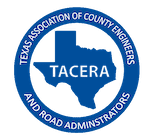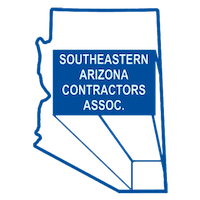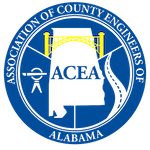Unless you work in the transportation or road construction industries, chances are, you don’t give much thought in your daily life to traffic calming methods. As their name implies, traffic calming methods are techniques used to reduce traffic speeds (and the practice of “cutting through” private streets) in order to decrease the risk of accidents and promote better safety for everyone on the road.
These techniques can come in the form of architectural decisions (e.g., roundabouts, narrowed lanes, curb extensions) or be free-standing, mostly self-contained structures and mechanisms.

Here are three different traffic calming devices that are commonly found on American roadways:
Speed Bumps
If your only goal is to make drivers reduce their speed, then look no further than the humble speed bump! These structures (which are frequently made out of plastic or rubber when they’re meant to be temporary and concrete when they’re meant to be permanent) put a relatively safe physical obstacle in the way of oncoming cars.
Hitting a road bump while driving at a high speed is typically an unpleasant experience; people inside the car feel a significant jolt, and the impact can actually damage the car itself (necessitating costly repairs). When presented with a choice of slowing down a bit or risking bodily/vehicular damage, most drivers will opt to take their foot off of the gas pedal.
While you probably won’t find speedbumps set up on major roads or highways, they’re a very common sight in parking lots and residential areas. If an area attracts a lot of foot traffic, bumps are a quick, inexpensive way to remind drivers to stay alert and drive safely.
Mounted Lights
There’s something about flashing lights that tend to grab people’s attention. Though it’s easy to miss dull, unlit signs or steadily illuminated beacons, an on-off-on-off pattern is extremely eye-catching.
It signals to drivers that there are hazards nearby that they should be aware of, which is usually enough to encourage them to slow down and keep an eye out for unexpected issues. For example, lights can be placed on signs denoting construction zones, and they can also be used to highlight crosswalks that aren’t part of an intersection regulated by traffic lamps.
Flashing red lights are generally reserved for stop signs, though amber lights can be used to signify all kinds of potential issues.
These days, many mountable lights are solar-powered, which conveniently negates the need for wires or complicated installations. They can be constructed to clip onto existing structures, too, allowing them to be reused on multiple occasions.
Radar Speed Signs
Be honest: have you ever been driving and glanced down at your speedometer, only to discover that you were going way faster than you thought you were? It’s embarrassingly easy to do, especially if there aren’t many other cars on the road—or there are a lot of cars but everyone’s driving faster than they should.
Most roads have posted speed limit signs every several thousand feet, but radar signs take this concept one step beyond by actually calculating the speed of oncoming vehicles and displaying it prominently.
Often times, simply broadcasting this number is enough to make drivers conscientious about their speed and ease up a bit, especially if they didn’t realize that they were going too fast in the first place.
Interestingly enough, some radar signs are actually equipped with flashing red and blue lights that activate if a car is traveling significantly faster than the posted limits allow. These flashers look very similar to the light bars on top of police cars, and if that visual cue isn’t enough to startle a speeding driver into slowing down, then nothing is!
Roadways are primarily designed with cars and other vehicles in mind, but they don’t necessarily “belong” to motorists; we should all strive to share and share alike every time we set out on a commute of some kind.
Traffic calming devices and other structures are important because they force people driving cars to slow down or be more aware of their surroundings. Although obstacles like speed bumps, flashing lights, and radar signs may seem cumbersome or unnecessary—especially when you’re behind the wheel of the car—rest assured that they’re designed to help save the lives of pedestrians, bicyclists, and even other motorists. They may also help reduce traffic congestion, which is something that we can all be happy about!
Submit Your Tip
Think you know something about road equipment that we missed out on? Then send us your tip, trick or fact using this form and we will feature you on our blog post!
For more information about traffic calming devices—including product overviews and a full catalog of our equipment offerings—please visit the official Transline Industries, Inc. website.












